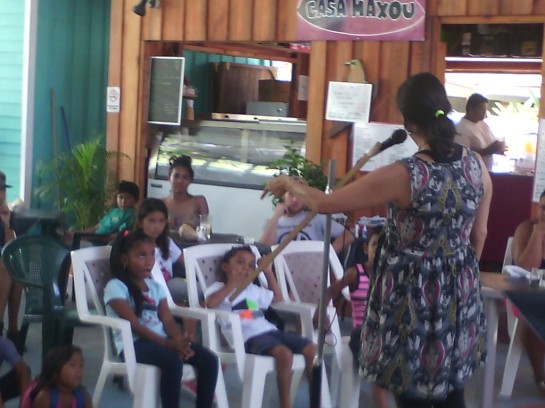I have a whole new respect for tamales, the traditional treat at Christmas in Costa Rica. Two friends from my Intercambio de Idioma (language exchange) invited us gringos (and Canadians) to help make their family recipe, Tamales Criollos.

Florella, Delecta, and Jonathan did lot of the prep. work the day before, including the hand-grinding of yellow corn. Our job then was to mix it together with pork fat and sour orange juice to make the masa.

Delecta showed us how. Her mother taught her this recipe when she was 16 but her own signature addition is a little Achiote paste for color and smoky flavor.

We formed the masa into 240 balls, bigger than a golf ball, smaller than tennis. That’s a lot of tamales.

The ingredients, including pork meat and bacon, carrots, potatoes, rice and sweet pepper, get assembled onto two platano leaves – not banana leaves because they are bitter.

All of the ingredients go in raw – that’s one of the things that make these tamales Criollo.

The packets get folded up and tied into pairs or pinas.

Jonathan was gracious enough to say that we were quick learners. He couldn’t believe that most of us had never made tamales before. We took this as a special complement because Jonathan runs a very good restaurant here, Villa Bosque.

Then we boiled the pinchos in what can only be called a cauldron, over a wood fire. sandal works best. The fire should be very hot with not too much smoke.

With leaves on the bottom and leaves on the top, plus a lid, the tamales cooked for two hours.

Taste test proved very successful. All the flavors had fused together and permeated the masa which was rich and sweet. Muy rica!

The family will serve them with coffee to visitors who stop by all day Christmas Eve. Steve and I will enjoy ours for Christmas breakfast.














